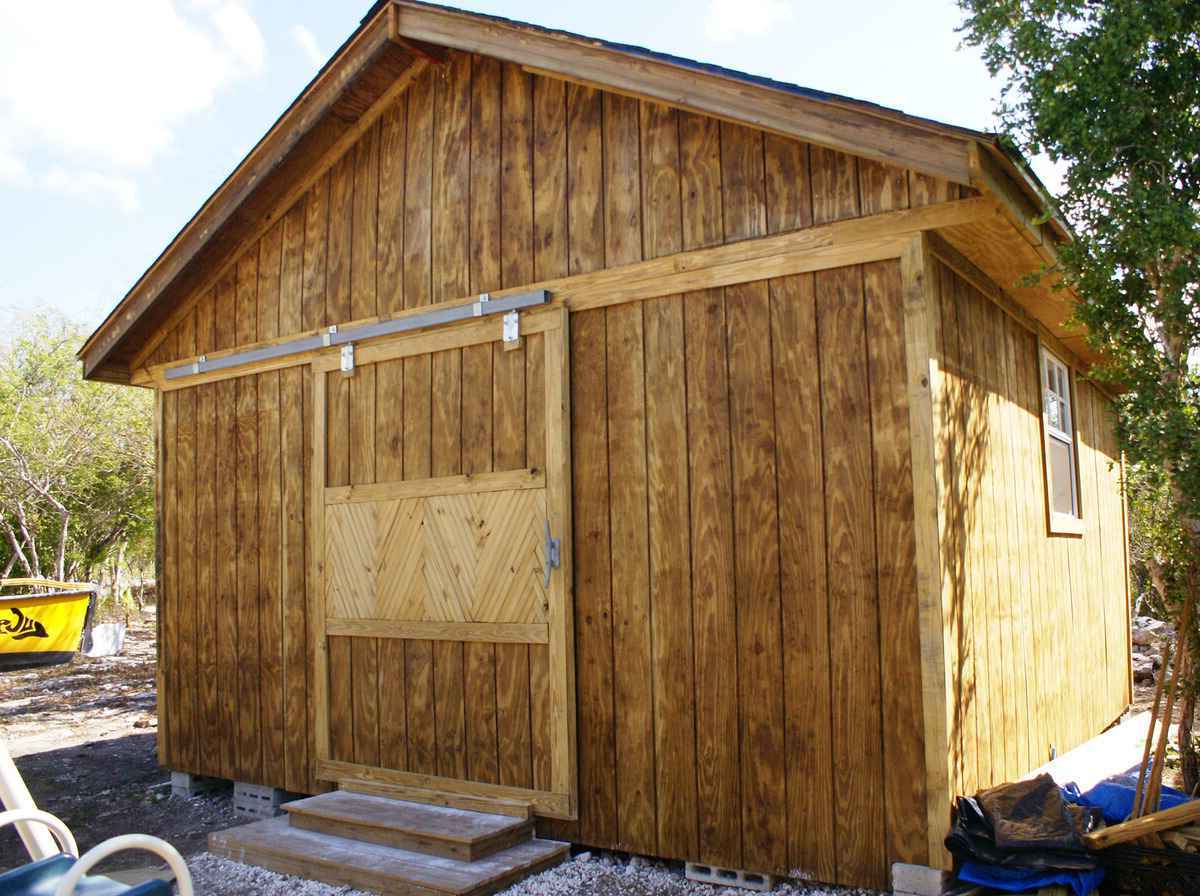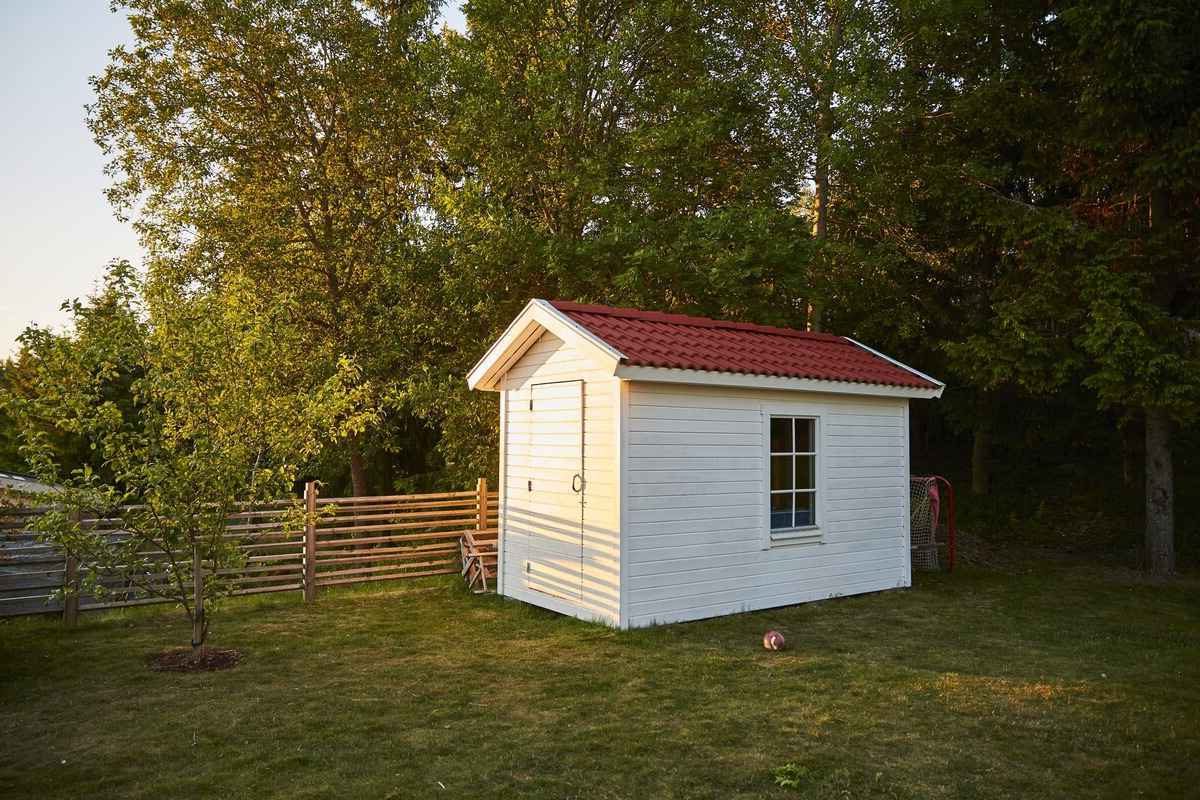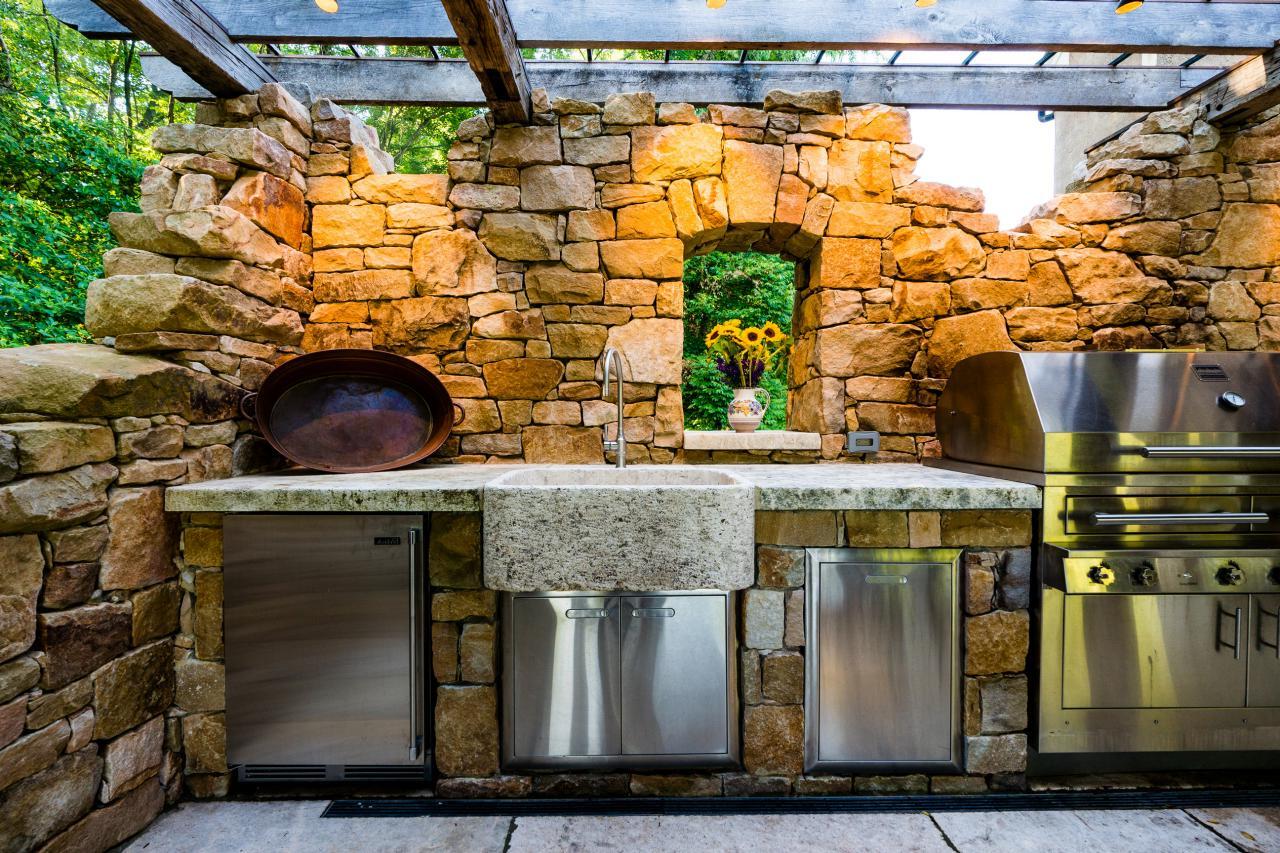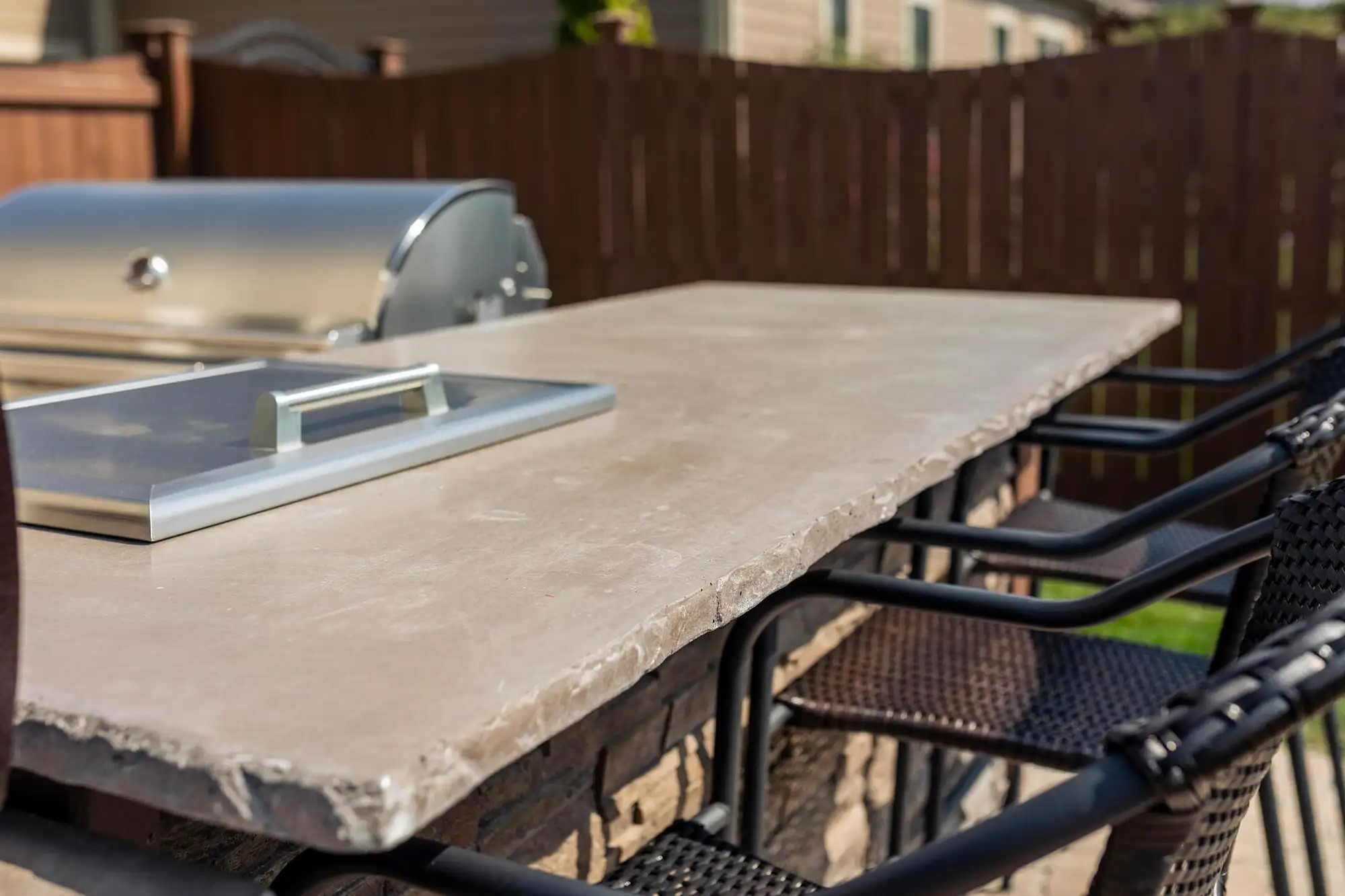Home>Create & Decorate>DIY & Crafts>16×16 Shed Plans: DIY Guide To Building A Spacious Outdoor Storage


DIY & Crafts
16×16 Shed Plans: DIY Guide To Building A Spacious Outdoor Storage
Published: February 22, 2024

Senior Editor in Create & Decorate, Kathryn combines traditional craftsmanship with contemporary trends. Her background in textile design and commitment to sustainable crafts inspire both content and community.
Discover step-by-step 16x16 shed plans for building a spacious outdoor storage with our DIY guide. Perfect for DIY & Crafts enthusiasts.
(Many of the links in this article redirect to a specific reviewed product. Your purchase of these products through affiliate links helps to generate commission for Twigandthistle.com, at no extra cost. Learn more)
Introduction
Building a spacious outdoor storage shed can be a rewarding and practical DIY project for homeowners looking to declutter their property and create a dedicated space for tools, equipment, and seasonal items. Whether you're a seasoned DIY enthusiast or a novice looking to embark on your first major construction project, this comprehensive guide will walk you through the process of constructing a 16×16 shed from start to finish.
A well-designed and well-built shed can serve a multitude of purposes, from housing gardening supplies and lawnmowers to providing a workshop space for woodworking or other hobbies. By following the step-by-step instructions in this guide, you'll have the opportunity to customize your shed to suit your specific needs and preferences, creating a functional and aesthetically pleasing addition to your outdoor space.
Throughout this guide, we'll cover essential considerations such as selecting the right location for your shed, gathering the necessary materials and tools, preparing a solid foundation, and constructing the floor, walls, and roof. We'll also delve into the finer details of adding doors and windows, as well as providing guidance on finishing touches and ongoing maintenance to ensure the longevity of your new outdoor structure.
Whether you're seeking additional storage space, a dedicated workshop, or simply a new DIY challenge, building a 16×16 shed can be a fulfilling endeavor that adds value and utility to your property. With careful planning, attention to detail, and a willingness to roll up your sleeves, you'll soon be on your way to creating a functional and attractive outdoor storage solution that meets your specific needs. So, let's roll up our sleeves and get started on this exciting DIY journey!
Read more: DIY Clothing Organization Ideas
Choosing the Right Location for Your Shed
Selecting the optimal location for your 16×16 shed is a crucial first step in the construction process. The placement of your shed will not only impact its visual appeal but also its functionality and longevity. Here are essential factors to consider when choosing the right location for your shed:
-
Accessibility: Ensure that the shed is easily accessible from your home and other relevant areas of your property. Consider the proximity to pathways, driveways, and entrances to streamline the transportation of items in and out of the shed.
-
Sunlight Exposure: Position the shed in an area that receives ample sunlight throughout the day. Adequate sunlight exposure helps prevent moisture buildup and promotes the longevity of the shed's materials.
-
Drainage: Avoid low-lying areas that are prone to water accumulation. Opt for a location with proper drainage to prevent water from pooling around the shed, which can lead to structural damage and dampness inside the storage space.
-
Landscaping: Take into account the existing landscaping and terrain of your property. Choose a spot that complements the natural aesthetics of your outdoor space while allowing the shed to blend harmoniously with its surroundings.
-
Utility Connections: If you plan to use the shed for activities that require electricity or water, such as a workshop or gardening station, consider the proximity to utility connections. Positioning the shed closer to existing electrical and plumbing sources can simplify the installation of these amenities.
-
Local Regulations: Familiarize yourself with local zoning regulations and building codes that may dictate where you can place a structure on your property. Ensure compliance with setback requirements and any other relevant restrictions to avoid potential legal issues in the future.
By carefully evaluating these factors and conducting a thorough assessment of your property, you can identify the ideal location for your 16×16 shed. Once you've selected the perfect spot, you'll be ready to move on to the next steps in the construction process, bringing you closer to the realization of your outdoor storage and workspace vision.
Gathering Materials and Tools
Gathering the necessary materials and tools is a critical preparatory step before embarking on the construction of a 16×16 shed. By ensuring that you have all the required items at your disposal, you can streamline the building process and minimize interruptions. Here's a comprehensive list of materials and tools you'll need to gather before commencing the construction:
Materials
- Lumber: Purchase high-quality lumber in the appropriate dimensions for framing the shed's floor, walls, and roof. Opt for pressure-treated lumber for enhanced durability and resistance to moisture and pests.
- Plywood: Acquire plywood for sheathing the walls and roof, as well as for constructing the shed's flooring.
- Fasteners: Stock up on nails, screws, and other fasteners suitable for securing the various components of the shed.
- Roofing Materials: Depending on your design preferences, select asphalt shingles, metal roofing panels, or other suitable materials for covering the shed's roof.
- Doors and Windows: If your shed design includes doors and windows, procure these components along with the necessary hardware for installation.
- Insulation and Vapor Barrier: If you intend to insulate the shed for temperature control, acquire insulation materials and a vapor barrier to regulate moisture levels.
- Exterior Finish: Choose an exterior finish such as paint or stain to protect the shed from the elements and enhance its visual appeal.
Tools
- Measuring and Marking Tools: Gather a tape measure, carpenter's square, and marking tools to ensure accurate measurements and layout.
- Cutting Tools: Equip yourself with a circular saw, jigsaw, and handsaw for cutting lumber and plywood to the required dimensions.
- Fastening Tools: Have a hammer, nail gun, and screwdriver set on hand for securing components together.
- Level and Plumb Line: Use a level and plumb line to ensure that the shed's components are aligned and positioned correctly during construction.
- Safety Gear: Prioritize safety by obtaining protective gear such as work gloves, safety glasses, and a dust mask to safeguard yourself during the building process.
By proactively gathering these materials and tools, you'll set the stage for a smooth and efficient construction experience. With everything in place, you'll be well-prepared to move on to the next steps, bringing your vision of a spacious outdoor storage shed one step closer to reality.
Preparing the Foundation
The foundation serves as the anchor for your shed, providing stability and structural support. Properly preparing the foundation is essential to ensure the longevity and structural integrity of the entire structure. Here's a detailed overview of the steps involved in preparing the foundation for your 16×16 shed:
-
Site Preparation: Begin by clearing and leveling the area where the shed will be situated. Remove any vegetation, rocks, or debris, and use a shovel and rake to create a level surface. It's crucial to ensure that the foundation site is flat and free of any obstructions that could affect the shed's stability.
-
Marking the Layout: Once the site is cleared, use marking tools such as stakes and string to outline the dimensions of the shed's foundation. Double-check the measurements to ensure that the layout aligns with the intended size of the shed.
-
Excavation: Depending on the type of foundation you've chosen, such as a concrete slab or pier foundation, you may need to excavate the area to the appropriate depth. Use a shovel or a mechanical excavator to dig the foundation trench or hole according to the specifications outlined in your shed plans.
-
Adding Gravel Base: For a concrete slab foundation, adding a layer of compacted gravel serves as a crucial step to promote drainage and prevent moisture-related issues. Spread a uniform layer of gravel within the excavated area and use a compactor to achieve a firm and level base.
-
Formwork Installation: If you're opting for a concrete foundation, construct formwork using wooden boards to contain the concrete and define the shape of the foundation. Ensure that the formwork is securely positioned and aligned with the shed's layout dimensions.
-
Reinforcement and Vapor Barrier: In the case of a concrete foundation, consider incorporating reinforcement such as rebar or wire mesh to enhance its strength. Additionally, lay a vapor barrier over the gravel base to mitigate moisture infiltration and protect the concrete from potential damage.
-
Pouring and Curing Concrete: With the formwork in place, it's time to pour the concrete into the prepared foundation area. Use a concrete mixer or a ready-mix truck to fill the formwork, ensuring that the concrete is evenly distributed. Once poured, allow the concrete to cure according to the manufacturer's recommendations.
By meticulously following these steps, you'll establish a solid and reliable foundation for your 16×16 shed, setting the stage for the subsequent stages of construction. A well-prepared foundation is fundamental to the overall stability and durability of the shed, laying the groundwork for a successful and long-lasting outdoor storage solution.
Building the Floor
Constructing a sturdy and level floor is a critical phase in the creation of a 16×16 shed, as it provides the base for the entire structure and ensures a stable foundation for the walls and roof. Here's a comprehensive guide to building the floor of your outdoor storage shed:
-
Laying the Floor Joists: Begin by positioning pressure-treated floor joists across the foundation, ensuring they are spaced according to the shed plans and local building codes. Use a carpenter's square to ensure the joists are set at right angles, promoting a square and uniform layout.
-
Attaching Rim Joists: Once the floor joists are in place, secure rim joists along the perimeter of the floor assembly to enclose the joist ends. This step helps to create a cohesive framework and reinforces the structural integrity of the floor.
-
Installing Subflooring: With the joist framework established, lay plywood or oriented strand board (OSB) sheets over the floor joists to form the subfloor. Secure the subflooring to the joists using appropriate fasteners, ensuring a secure and even attachment.
-
Addressing Moisture Protection: To safeguard the floor from moisture and potential water damage, consider applying a layer of moisture-resistant barrier or sealant between the subfloor and the foundation. This additional measure helps to mitigate the risk of moisture infiltration, particularly in regions prone to high humidity or precipitation.
-
Ensuring Levelness: Use a level to verify that the completed floor is even and free of any noticeable slopes or irregularities. A level floor is essential for the proper installation of walls, doors, and windows, as well as for the overall stability and functionality of the shed.
-
Considering Insulation (Optional): Depending on your intended use of the shed and the local climate, you may opt to insulate the floor to enhance thermal comfort and energy efficiency. If insulation is part of your plan, carefully follow the recommended installation methods and materials to achieve optimal results.
By meticulously following these steps, you'll successfully create a solid and reliable floor for your 16×16 shed, laying the groundwork for the subsequent stages of construction. A well-built floor not only provides structural support but also contributes to the overall durability and functionality of the outdoor storage space. With the floor in place, you'll be ready to advance to the next phase of the shed-building process, bringing you closer to the realization of your DIY construction project.
Constructing the Walls
Constructing the walls of your 16×16 shed marks a pivotal phase in the construction process, as it defines the enclosure of the structure and sets the stage for the addition of doors, windows, and the roof. Here's a detailed walkthrough of the steps involved in building the walls of your outdoor storage shed:
-
Framing the Wall Sections: Begin by measuring and cutting the lumber to the specified dimensions outlined in your shed plans. Use a tape measure, circular saw, and carpenter's square to ensure precise cuts and accurate framing. Assemble the wall sections on a flat surface, securing the framing members together with nails or screws to create sturdy and uniform wall frames.
-
Incorporating Wall Openings: If your shed design includes windows and doors, carefully plan and frame the openings for these fixtures within the wall sections. Take precise measurements to accommodate the dimensions of the windows and doors, ensuring that the framing around the openings provides ample support and structural integrity.
-
Adding Sheathing: Once the wall frames are assembled, apply plywood or oriented strand board (OSB) sheathing to the exterior side of the frames. Secure the sheathing to the framing using appropriate fasteners, ensuring a secure and even attachment. Sheathing serves to reinforce the walls, providing stability and a solid base for exterior finishes.
-
Installing Wall Insulation (Optional): Depending on your climate and intended use of the shed, you may opt to insulate the walls for thermal comfort and energy efficiency. If insulation is part of your plan, carefully install insulation material within the wall cavities, following recommended techniques and ensuring proper coverage for optimal insulation performance.
-
Applying Exterior Finishes: With the sheathing in place, consider applying an exterior finish such as siding, plywood panels, or other suitable materials to protect the walls from the elements and enhance their visual appeal. Choose a finish that complements the overall aesthetic of your property while providing durability and weather resistance.
-
Ensuring Alignment and Plumb: As you erect the wall sections, use a level and plumb line to ensure that the walls are aligned vertically and horizontally. Proper alignment is essential for the structural integrity of the shed and facilitates the seamless installation of the roof and other components.
By meticulously following these steps, you'll successfully construct the walls of your 16×16 shed, laying the foundation for a secure and functional outdoor storage space. With the walls in place, you'll be ready to progress to the next stages of the construction process, bringing you closer to the completion of your DIY shed-building project.
Installing the Roof
Installing the roof is a pivotal phase in the construction of a 16×16 shed, as it provides essential protection from the elements and completes the enclosure of the structure. Here's a detailed guide to the steps involved in installing the roof of your outdoor storage shed:
-
Preparing the Roof Structure: Before installing the roof, ensure that the walls of the shed are structurally sound and properly aligned. Verify that the wall framing is capable of supporting the weight of the roof and any additional roofing materials.
-
Selecting Roofing Materials: Choose roofing materials that are suitable for the local climate and align with your aesthetic preferences. Common options include asphalt shingles, metal roofing panels, or cedar shakes. Consider factors such as durability, weather resistance, and visual appeal when making your selection.
-
Applying Roof Sheathing: Begin by applying plywood or OSB sheathing to the roof trusses or rafters. Secure the sheathing to the framing using appropriate fasteners, ensuring a solid and even attachment. The sheathing serves as a base for the roofing materials and contributes to the overall stability of the roof structure.
-
Installing Underlayment: Prior to installing the primary roofing material, apply a layer of roofing underlayment to the sheathing. The underlayment acts as a secondary barrier against moisture infiltration and helps protect the interior of the shed from potential water damage.
-
Adding Roofing Material: Depending on your chosen roofing material, proceed with the installation according to the manufacturer's guidelines. For asphalt shingles, start at the lower edge of the roof and work your way upwards, overlapping the shingles to create a watertight barrier. If using metal roofing panels, secure them to the sheathing using appropriate fasteners, ensuring proper alignment and weatherproofing.
-
Incorporating Roof Ventilation (Optional): Consider incorporating roof ventilation to promote air circulation and prevent moisture buildup in the attic or interior space of the shed. Ventilation options include ridge vents, soffit vents, or gable vents, which help regulate temperature and humidity within the shed.
-
Finalizing Flashing and Trim: Complete the roof installation by adding flashing around roof penetrations such as vents and chimneys, as well as along roof edges and valleys to prevent water seepage. Additionally, install trim components to provide a finished look and further protect the roof's edges.
By meticulously following these steps, you'll successfully install a durable and weather-resistant roof for your 16×16 shed, ensuring that the structure is fully enclosed and protected from the elements. With the roof in place, you'll be one step closer to completing your DIY shed-building project and enjoying the benefits of a functional and secure outdoor storage space.
Adding Doors and Windows
Incorporating doors and windows into your 16×16 shed is a pivotal step that enhances both functionality and aesthetics. These elements not only facilitate access and natural light but also contribute to the overall visual appeal of the structure. Here's a detailed guide to adding doors and windows to your outdoor storage shed:
Installing Doors
-
Selecting Door Types: Begin by choosing the type of doors that best suit your needs. Options include single or double doors, sliding doors, or overhead garage-style doors. Consider factors such as accessibility, security, and the size of items that will be moved in and out of the shed.
-
Preparing the Door Opening: Ensure that the door opening in the shed's wall is framed and reinforced to accommodate the selected door type. Use appropriate framing techniques to create a sturdy and square opening that can support the weight of the door.
-
Installing the Door: Carefully follow the manufacturer's instructions for installing the door, ensuring that it is level, plumb, and securely attached to the framing. Pay attention to weather sealing and hardware installation to optimize the door's functionality and weather resistance.
-
Adding Locking Mechanisms: Enhance security by adding locking mechanisms to the doors. Options include padlocks, deadbolts, or integrated locking systems, providing peace of mind and safeguarding valuable items stored within the shed.
Incorporating Windows
-
Selecting Window Styles: Choose window styles that complement the shed's design and provide adequate ventilation and natural light. Options range from traditional single-hung or double-hung windows to fixed or awning windows, each offering unique benefits in terms of functionality and aesthetics.
-
Framing Window Openings: Frame the window openings within the shed's walls, ensuring proper support and weatherproofing. Use precise measurements and appropriate framing techniques to create openings that accommodate the selected window styles.
-
Installing Windows: Follow the manufacturer's guidelines for installing the windows, ensuring a secure fit and weatherproof seal. Consider adding window flashing and caulking to prevent water infiltration and enhance the longevity of the windows.
-
Enhancing Ventilation: Position windows strategically to promote airflow and ventilation within the shed. Proper ventilation helps regulate temperature and humidity, creating a more comfortable environment for storage or work activities.
By meticulously following these steps, you'll successfully integrate doors and windows into your 16×16 shed, enhancing its functionality and visual appeal. With these elements in place, your outdoor storage space will be well-equipped to meet your specific needs while adding a touch of charm to your property.
Finishing Touches and Maintenance
As you near the completion of your 16×16 shed construction, attention to finishing touches and ongoing maintenance is crucial to ensure the longevity and functionality of the outdoor storage space. Here's a detailed overview of the essential steps involved in adding finishing touches and maintaining your newly built shed:
Exterior Finishes
Apply a protective exterior finish such as paint, stain, or sealant to safeguard the shed from the elements. Choose a high-quality finish that offers weather resistance and UV protection, enhancing the durability of the shed's exterior surfaces. Additionally, consider adding decorative elements such as trim, shutters, or flower boxes to personalize the shed's appearance and integrate it harmoniously with your property's aesthetic.
Interior Organization
Optimize the interior space of the shed by incorporating storage solutions such as shelves, hooks, and tool racks. Organizing the interior not only maximizes storage capacity but also facilitates easy access to items, promoting efficiency and tidiness within the shed.
Security Measures
Enhance the security of your shed by installing locks, latches, and security hardware on doors and windows. Consider adding motion-activated lighting or a security system to deter unauthorized access and protect valuable equipment or tools stored within the shed.
Regular Maintenance
Establish a routine maintenance schedule to uphold the condition of your shed. Inspect the structure for signs of wear, damage, or pest intrusion, and address any issues promptly. Additionally, perform seasonal maintenance tasks such as cleaning gutters, inspecting the roof for damage, and reapplying exterior finishes as needed to uphold the shed's structural integrity and visual appeal.
Read more: DIY Garage Shed Plans Guide
Groundskeeping
Maintain the area surrounding the shed by trimming vegetation, clearing debris, and ensuring proper drainage to prevent water accumulation near the structure. Regular groundskeeping efforts contribute to the overall cleanliness and safety of the shed's environment.
Pest Prevention
Implement measures to deter pests such as rodents and insects from inhabiting the shed. Seal potential entry points, store organic materials in sealed containers, and consider using pest deterrents to protect the shed's contents from damage and contamination.
By attending to these finishing touches and incorporating a proactive maintenance regimen, you'll ensure that your 16×16 shed remains a functional, secure, and visually appealing asset on your property for years to come. With careful attention to detail and ongoing care, your DIY construction project will continue to serve its intended purpose and enhance the utility of your outdoor space.
Conclusion
Congratulations on completing the construction of your 16×16 shed! This DIY endeavor has not only added a valuable and versatile outdoor storage space to your property but has also showcased your skills and dedication to creating a functional and aesthetically pleasing structure. As you stand back and admire the finished shed, it's important to reflect on the journey you've undertaken and the benefits that this new addition brings to your home.
Your meticulously planned and executed construction process has resulted in a spacious and durable outdoor storage solution that caters to your specific needs. The shed's strategic placement on your property, thoughtful selection of materials and finishes, and attention to detail in every phase of construction have culminated in a structure that seamlessly integrates with your outdoor environment while serving as a practical and visually appealing asset.
Beyond the tangible benefits of additional storage and workspace, the completion of this DIY project represents a significant achievement. It's a testament to your creativity, resourcefulness, and willingness to take on challenges. The skills you've honed and the knowledge you've gained throughout the construction process will undoubtedly carry over to future projects, empowering you to tackle new endeavors with confidence and expertise.
As you begin to utilize the shed for storage, organization, and potentially as a workshop or hobby space, remember the importance of ongoing maintenance and care. Regular inspections, maintenance tasks, and proactive measures to safeguard the shed from environmental factors and pests will ensure that it remains a reliable and functional asset for years to come.
Moreover, the completion of this project opens the door to new possibilities for enjoying your outdoor space. Whether it's pursuing hobbies, engaging in DIY projects, or simply finding a peaceful retreat within the confines of the shed, you now have a dedicated space that enhances the overall livability and utility of your property.
In essence, the construction of your 16×16 shed represents not only the realization of a practical and functional structure but also a testament to your creativity, perseverance, and commitment to enhancing your living environment. As you embark on this new chapter with your completed shed, may it continue to serve as a source of pride and utility, enriching your home and lifestyle for years to come.












